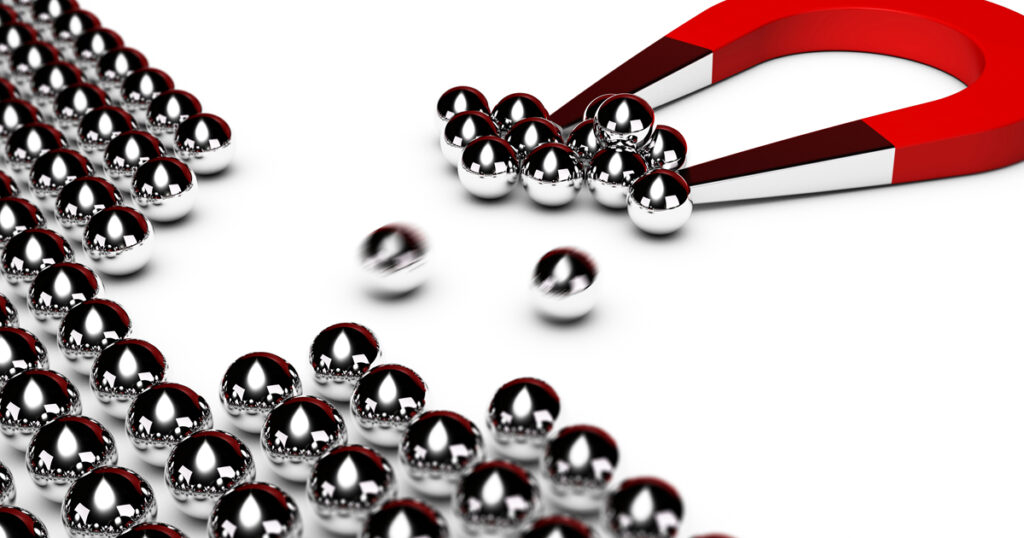
From my childhood, I have often heard from my elders that we should sleep with our head to the east and never towards the north.
Obviously, we never listened.
We slept in every direction and in all angles, anywhere and anytime.
“Why sleep east?”, we asked.
“East is auspicious”, they said.
“Superstitious Nonsense”, we thought but did not say that aloud.
We continued to sleep as we pleased, ignoring the wisdom of the elders – because they had no convincing scientific explanations for the ‘wisdom’ that was passed down for generations. We needed proof.

Now, I have learned my lesson in humility – to respect the wisdom of the elders. Today when I pass on these little bits of wisdom to my children, I have also found enough scientific evidence to support my claim. After all, I don’t want them to make the same mistakes I did.
In a world filled with myths and false beliefs, it is important to discover the truth from under the shroud of superstition – and for this scientific evidence is a big help. When we brush off such things as superstition, we are the losers. We pay with our own health for our ignorance.
The Simple Answer
When our head is positioned north, the magnetic pole in our body is aligned with the magnetic pole of the earth. The attraction of the powerful north pole magnetism causes too much blood to rush into our brain leading to higher blood pressure in the brain.
This pressure can lead to small blood leaks in the brain or worse, it can even cause a stroke. The smaller damages accumulate over time and can end up in major health problems.
This is the simple version. It’s actually much more complicated than that. There are also many benefits to sleeping to the east as there are adverse reactions in the body when you position your head to the north.
If you want to understand why this sleep-head positioning is so important for our well-being, you must know a few basics. The first one is about just how refined and efficient our circulatory system is, especially the blood supply to the brain.
1. Blood to the Brain
Have you thought about why our heart is positioned towards the upper half of our body rather than in the middle?
The heart has to pump blood against gravity to send blood up to your brain. So it’s positioned a little closer to the head.
When you use a garden hose for watering your plants, what happens if you use your fingers to close half the opening of the hose? The water sprays faster and further from the hose as the water pressure inside the hose increases!
Similarly, the blood vessels in the brain tend to get more and more narrow as the distance from the heart increases – to increase the blood pressure without straining the heart so that the blood can reach its destination.

So when you are sitting or standing, the heart easily sends the blood through large blood vessels to your lower body – with the help of gravity. The elevated heart position and the narrowed blood vessels help send the blood to your brain – without any additional strain on the heart – though it has to work against gravity to send the blood upwards.
Now when you lie down, this balance is altered. More blood flows towards the brain as there is no more gravity to fight against. But our body is equipped to handle this change and it has a very refined mechanism that runs with precision to circulate the blood from the heart to the brain and back.
When you lie down, you must have noticed that your pulse rate drops. A normal resting heart rate for adults ranges from 60 to 100 beats a minute. An extremely fit person may have a normal resting heart rate closer to 40 beats a minute. A lower heart rate at rest implies more efficient heart function and better cardiovascular fitness.
The body makes this adjustment because if blood is pumped at the same level, too much will go into your head, causing damage. The blood vessels that reach the brain cells are so fine and hair like that if extra blood is pumped in or the blood pressure increases too much, they may burst and you will have a hemorrhage.
Blood vessel walls become thicker and tougher as we age and they lose the elasticity to adjust to sudden changes in blood pressure. This adds to the risk of aneurysms [bulging and weak areas in the wall of an artery that supplies blood to the brain]. This bulge can rupture and cause internal bleeding.
2. The Iron in your Blood

The doctor checks the pale inside of your lower eyelids and diagnoses that you have iron deficiency and that you are anemic.
What do you think he is going to prescribe?
Iron tablets, of course.
If you don’t have enough iron, your body can’t make enough healthy oxygen-carrying red blood cells.
3. Iron in a Magnetic Field
Iron is attracted to magnets. I am sure you don’t need to be convinced of that.
For those who still want to know more about it, read on…the rest of you can skip to the next point.

Magnets attract iron due to the influence of their magnetic field upon the iron. Before a piece of iron first enters the magnetic field of a magnet, the polarization of the iron atoms is random.
As it is exposed to the magnetic field, the atoms of the iron begin to align their electrons with the flow of the magnetic field, which makes the iron magnetized as well. This, in turn, creates an attraction between the two magnetized objects. This is why a piece of iron that is exposed to a strong magnet becomes magnetic itself for a period of time afterward.
The truth is that magnets attract much more than iron. In fact, magnetic fields have a level of attraction or repulsion on all atoms that fall within their range. For instance, a strong electromagnet could attract or repel animal matter and even a human being.
Small magnets don’t have a visible effect on such matters because they simply aren’t powerful enough. While their magnetic field is influencing everything around them, they can only visibly affect materials that are easily influenced, such as iron.
4. Our Earth has a Magnetic Field

The swirling motions of molten iron inside the Earth’s outer core are what forms this magnetic field. There are two geographic poles: the North Pole and the South Pole.
A compass always points towards a magnetic pole of the earth. Our ancestors who first used the compass noted that the north end of the needle always pointed towards a certain point. So they called that point ‘the North.’ Bright guys!
Later on, as it was discovered that a magnet is attracted to the opposite pole, we realized that it has been named in reverse. But the names have stuck in place for centuries. The North Pole is actually the South pole and vice versa. The north end of the magnetic needle in the compass is repelled by the north pole and is attracted by the south pole! A compass always points to the south pole which is called the North pole.
It’s quite a brain twister. But then, it’s a really interesting piece of information.
I’ll just clarify that by using one more line for those who are still a little bit confused.
Since the magnetic North Pole attracts the “north” ends of other magnets, it is actually the “South Pole” of our planet’s magnetic field. [though named the opposite.]
As we continue with our scientific evidence, we will continue to call the South Pole by its given name – the North.
5. Magnetoreception
Humans have long been fascinated by the sight of migrating birds flying in their V formation. The flight paths of these migrating birds can span continents.

Adult salmon swim from the ocean upstream through branching and churning rivers to lay eggs in the spot where they were born. It’s a route they took only once before — in the opposite direction, as young fish — and yet they don’t get lost.
How do they know where to go?
GPS? Do you remember your life before Google Maps? The men used to be extra famous for getting lost and driving around in circles, refusing to ask for directions. Most women have had trouble reading maps, so [wisely] they still do stop and ask for directions even if they have their GPS navigation.
Now let’s get back to the animal kingdom.
Scientists have found that some animals come equipped with their own version of GPS – they have a biological compass that can read the Earth’s magnetic field.
We all have five main senses – sight, hearing, smell, taste, and touch. Magnetoreception seems to be a sixth sense in these animals which allows them to detect the Earth’s magnetic field for the purpose of navigation – to recognize direction, altitude, or location. This sensory mode is used by a variety of animals for orientation and navigation and as a method for animals to develop regional maps.
A bee that buzzes its way zig-zagging across a fruit orchard, collects the nectar or pollen, and then finds its way back to its honeycomb – uses Magnetoreception for creating that regional map.
Fascinating isn’t it.
In a series of experiments, Dr. Robin Baker at the University of Manchester took hundreds of blindfolded university students on a bus trip that followed a tortuous road for up to 32 miles. At the final destination, he asked the students to point to the compass direction of the university. Uncannily, most students could pick out the correct quadrant. When Baker added a bar magnet into their blindfolds to block the presumed magnetic sense, however, they lost their ability.
So, do humans have Magnetoreception?
Well, definitely nothing so obvious as these animals. But there is plenty of proof that we are affected by the Earth’s magnetic field – both positively and negatively – in many more ways than it is obvious.
It is said men have a better sense of direction than women. Some studies concluded that this is because of the higher testosterone levels. Maybe someone should try strapping a bar magnet on these guys and see if their sixth sense still functions right.
6. That’s One Powerful Magnet Indeed!
It is an accepted scientific fact that the entire surface of the earth – all the continents – are rock plates floating on the magma. When the magma [molten lava] under the earth’s surface cools, the magnetic minerals in them solidify with their crystals oriented towards the so-called north pole.

Plate tectonics is the concept that these continental rock plates move incredibly slowly towards the North pole as the magnetically charged magma is attracted to the giant magnet’s irresistible pull.
Sleeping with Your Head to the North
Consider the first point above – about the position of the heart.
If the earth’s magnetic poles are so powerful – enough to pull the continents apart – then it undoubtedly pulls at the iron in our blood. Since the iron is attached to the red blood cells, this can affect our circulatory system, altering the flow, increasing, or decreasing blood pressure.
When our head, the north end of our body magnet, is positioned towards the North Pole, [actual South Pole], there is a powerful attraction that causes more blood to be pulled towards the brain.
As mentioned in the first point, the blood flow to the brain is already higher when you lie down [than standing or sitting]. When you lie down with your head to the North, you are increasing this blood flow even more.
Normal Blood Flow to the Brain at Night
Studies have proven that cerebral blood flow reduces 25 to 44% during deep sleep.
A lot of healing takes place in our bodies during sleep. Growth hormones and blood flow are two major factors that aid this recovery process.
When we are sleeping, our bodies and brain are at rest. Our overall energy consumption is lowered during this time. Our body then uses its energy stores to repair and restore our bones, muscles, and other tissues that need attention. More blood is sent into these areas to help with this healing process.
While we are sleeping, we are not conscious. It is our subconscious or rather, the autonomic nervous system that continues to control vital body functions such as our breathing and the heart rate. Waking up someone who is in the deep sleep stage is quite hard. A thief can happily bang around a few dishes and still steal whatever he wants from your house, during this phase of your sleep. It takes a while for more blood to reach our brains and wake us up – to switch on our conscious minds to comprehend what’s happening around us.
When we sleep with our heads to the north, we are increasing the blood flow to the brain – opposite to what is required by our body at that time. We are interrupting the healing process that should be occurring in our body during the sleep cycles by disrupting the blood flow to the sites of healing.
Increased Intracranial pressure
When more blood flows into our brain than required, the intracranial pressure [blood pressure in the brain] increases. Small bleeding happens in our brains sometimes without us being aware of it. These may not incapacitate us in any obvious way. But these minute damages may accumulate over time and lead to major health problems later on in life.
Just because you slept with your head to the North for one day – you will not fall dead or wake up the next day with a stroke. [unless you are quite aged with really weak blood vessels and has an aneurysm that’s ready to burst]
Remember the saying, “Little drops of water make the mighty ocean.”
Minute damages to the blood vessels in your brain – over an extended period of time – can lead to massive brain damage.
Prevention is better than a cure.
Even if you are not convinced, it is still better to be safe than sorry.
Do not sleep with your head to the North. In the southern hemisphere, don’t put your head to the south.”
Then again, Ayurveda does, strangely, recommend that a person should sleep to the north for relief from pitta dosha. [certain health issues with the digestive, enzymatic, and endocrine systems in the human body.] Maybe the magnetic attraction of the North pole and the increased blood flow to the brain is actually beneficial in these cases.
Without getting sidetracked into this topic, let me just make it clear that – no two people are alike -what is nectar for one person may be poisonous to another and vice versa. There are always some exceptions to any case. For most people, it’s best not to sleep towards the North.
The Best Direction for a Healthy Sleep

So if not North, then what? The South?
In Indian tradition, a dead body is always placed with the head to the south and feet to the north.
So sleeping with head towards South doesn’t seem like a good idea either, but it’s said to be a better option than the North. Maybe the repelling magnetic poles may push the blood away from the brain area and the heart has to work harder to circulate the blood into the brain? I couldn’t find any real scientific evidence to support this, but it sounds possible…
So what’s the next option? East?
The Chinese Feng Shui or the Indian Ayurveda, all traditional cultures have great respect for the four cardinal directions: north, south, east, and west. According to these traditions, it is most beneficial to sleep with the head towards the east. This is believed to increase creative energy and concentration power while bringing enlightenment and balance.
This article is beginning to remind me of George Martin’s Game of Thrones. He planned to write the story in three volumes, but as he wrote, the story just went on and on and on – and now we have all been waiting breathlessly for the seventh volume to find if Daenerys did win the Iron throne of Westeros with her three dragons. (In the end, we had to be satisfied with the TV series rather than the book – as of 2021, the book is still pending release)
Anyway, what I meant is – ‘Why Sleep East’ is a long story that requires a chapter to itself. There’s a lot of fascinating stuff involving solar energy, lunar energy, and even telluric energy – the magnetic lines of energy float along the face of the Earth. We’ll also dig into the science behind which side you should sleep on – the right or the left, and plenty more…
So just sleep with your head to the east and we’ll meet again in the next chapter as soon as I finish writing it.
“A good laugh and a long sleep are the best cures in the doctor’s book.” – Irish Proverb.
